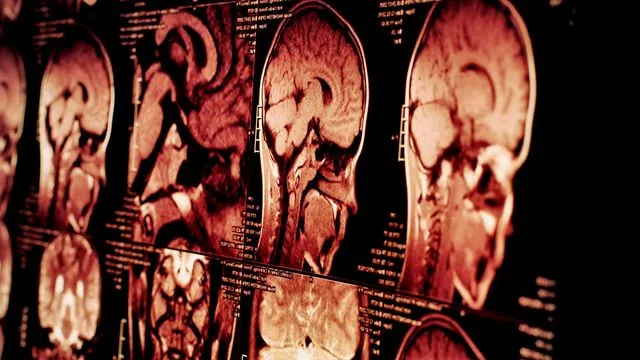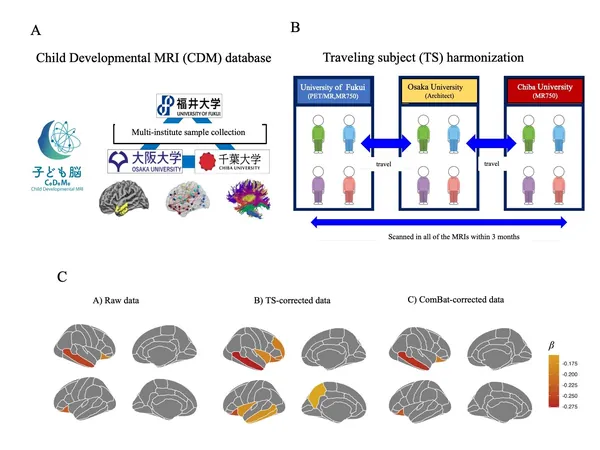
Could Brain Flexibility at Rest Be a New Warning Sign for Alzheimer’s?
2025-08-29
Author: Sarah
New Study Reveals Alarming Connection to Alzheimer’s Risk
A groundbreaking study from the University of Michigan and Columbia University has revealed a startling insight into Alzheimer’s disease: certain brain regions in those affected reorganize more frequently while at rest compared to healthy individuals. This novel research, published in the *Journal of Alzheimer’s Disease*, raises the question of whether neural flexibility could be a key indicator of Alzheimer’s risk.
What is Neural Flexibility?
Neural flexibility, as explained by Eleanna Varangis, an assistant professor at the U-M School of Kinesiology, refers to the brain's ability to reorganize its regions into functional networks. This adaptability is essential for carrying out various cognitive tasks. In Alzheimer’s patients, the brain appears to undergo this reshuffling far more frequently, leading to the potential for early identification of the disease.
A Race Against Time
With startling statistics revealing that 1 in 10 men and 1 in 5 women will develop Alzheimer’s in their lifetime, early intervention becomes crucial for maintaining independence. The study utilized functional MRI data collected from 862 older adults participating in the Alzheimer’s Disease Neuroimaging Initiative, assessing three distinct groups: cognitively normal individuals, those with mild cognitive impairment, and patients diagnosed with Alzheimer’s.
Uncovering the Connection
The researchers sought to understand how Alzheimer’s-induced brain damage affects neural flexibility and if this flexibility could help predict the transition from cognitive normality to Alzheimer’s. Their findings indicated that individuals with Alzheimer’s exhibited significantly higher neural flexibility than those without cognitive impairment, particularly in six specific brain networks.
A Glimmer of Hope?
Among the 617 healthy participants, 8.6% transitioned to dementia over the course of 11 years, linking higher neural flexibility in the visual network with an increased risk of developing Alzheimer’s. Varangis emphasized that while this effect was modest, it suggests changes in the visual regions might signal Alzheimer's risk even before formal diagnosis.
A Surprising Twist
What surprised the researchers was that the visual network—typically not associated with cognitive impairment—turned out to be a key predictor of Alzheimer’s conversion. However, these sensory regions might show increased flexibility because they're healthier and less affected by Alzheimer’s pathology initially.
Understanding Brain Dynamics
Varangis cautioned that although increased neural flexibility often signifies adaptability, it can also highlight underlying issues. Frequent reassignment of brain regions during rest might indicate dysfunction, suggesting that parts of the brain may not be operating as they should in the early stages of the disease.
Looking Ahead
While these findings are an exciting step forward, Varangis emphasizes this research is still at an experimental stage and should not be viewed as conclusive diagnostic criteria. The takeaway? The brain's dynamic nature may offer hope, demonstrating a remarkable resilience even in the face of cognitive decline.
Final Thoughts
As scientists explore new frontiers in understanding Alzheimer’s, this study shows promise in identifying early indicators, potentially paving the way for interventions that could change the course of this devastating disease.



 Brasil (PT)
Brasil (PT)
 Canada (EN)
Canada (EN)
 Chile (ES)
Chile (ES)
 Česko (CS)
Česko (CS)
 대한민국 (KO)
대한민국 (KO)
 España (ES)
España (ES)
 France (FR)
France (FR)
 Hong Kong (EN)
Hong Kong (EN)
 Italia (IT)
Italia (IT)
 日本 (JA)
日本 (JA)
 Magyarország (HU)
Magyarország (HU)
 Norge (NO)
Norge (NO)
 Polska (PL)
Polska (PL)
 Schweiz (DE)
Schweiz (DE)
 Singapore (EN)
Singapore (EN)
 Sverige (SV)
Sverige (SV)
 Suomi (FI)
Suomi (FI)
 Türkiye (TR)
Türkiye (TR)
 الإمارات العربية المتحدة (AR)
الإمارات العربية المتحدة (AR)